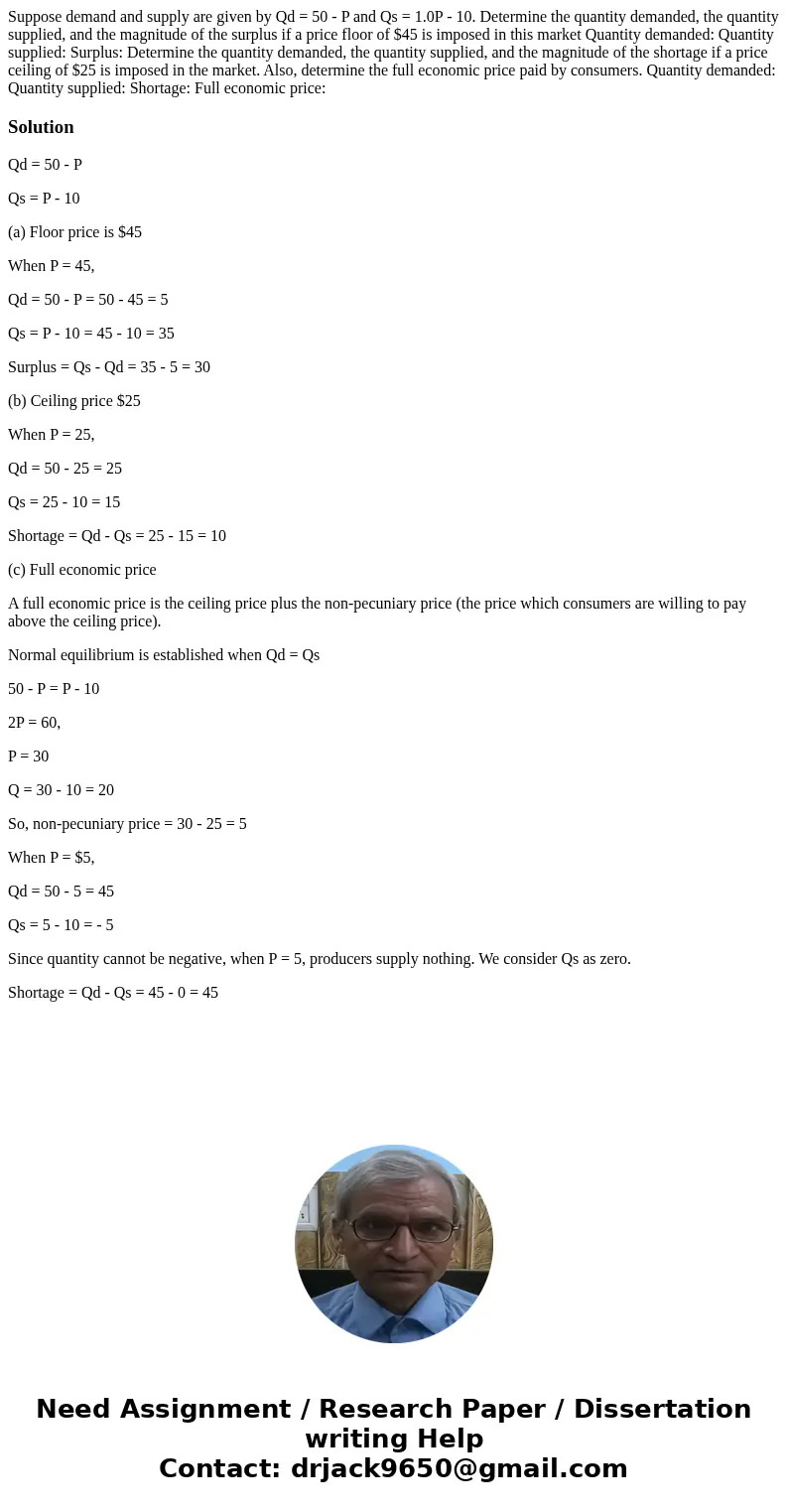Suppose demand and supply are given by Qd 50 P and Qs 10P
Suppose demand and supply are given by Qd = 50 - P and Qs = 1.0P - 10. Determine the quantity demanded, the quantity supplied, and the magnitude of the surplus if a price floor of $45 is imposed in this market Quantity demanded: Quantity supplied: Surplus: Determine the quantity demanded, the quantity supplied, and the magnitude of the shortage if a price ceiling of $25 is imposed in the market. Also, determine the full economic price paid by consumers. Quantity demanded: Quantity supplied: Shortage: Full economic price:
Solution
Qd = 50 - P
Qs = P - 10
(a) Floor price is $45
When P = 45,
Qd = 50 - P = 50 - 45 = 5
Qs = P - 10 = 45 - 10 = 35
Surplus = Qs - Qd = 35 - 5 = 30
(b) Ceiling price $25
When P = 25,
Qd = 50 - 25 = 25
Qs = 25 - 10 = 15
Shortage = Qd - Qs = 25 - 15 = 10
(c) Full economic price
A full economic price is the ceiling price plus the non-pecuniary price (the price which consumers are willing to pay above the ceiling price).
Normal equilibrium is established when Qd = Qs
50 - P = P - 10
2P = 60,
P = 30
Q = 30 - 10 = 20
So, non-pecuniary price = 30 - 25 = 5
When P = $5,
Qd = 50 - 5 = 45
Qs = 5 - 10 = - 5
Since quantity cannot be negative, when P = 5, producers supply nothing. We consider Qs as zero.
Shortage = Qd - Qs = 45 - 0 = 45

 Homework Sourse
Homework Sourse